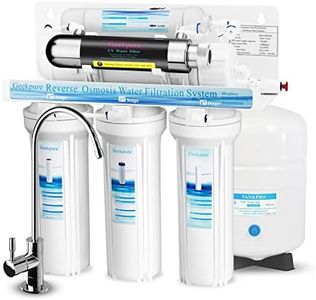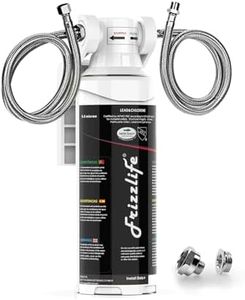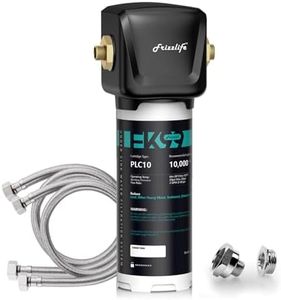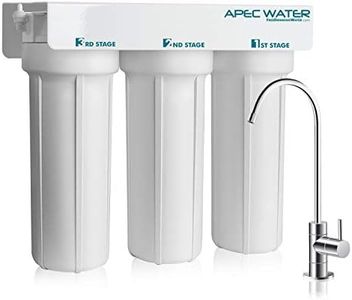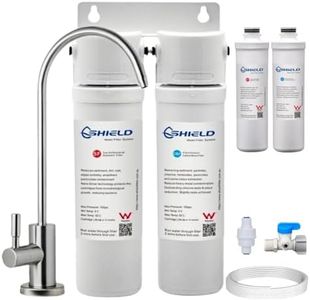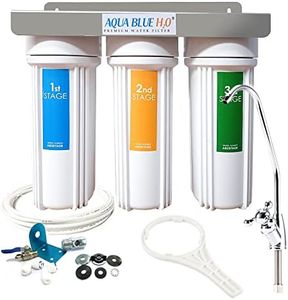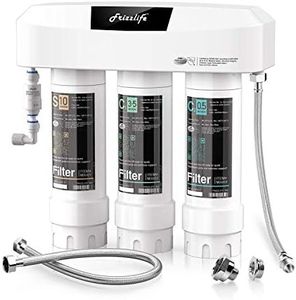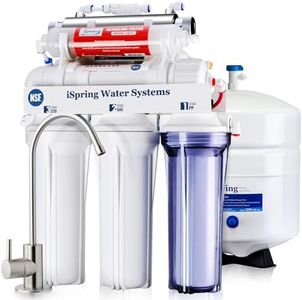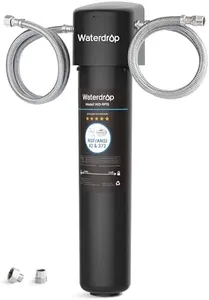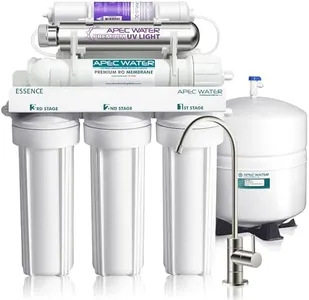We Use CookiesWe use cookies to enhance the security, performance,
functionality and for analytical and promotional activities. By continuing to browse this site you
are agreeing to our privacy policy
10 Best Under Sink Water Filters
From leading brands and best sellers available on the web.Buying Guide for the Best Under Sink Water Filters
Choosing the right under-sink water filter can significantly improve the taste, quality, and safety of your household water. These filters are installed out of sight under your kitchen sink and can target a range of contaminants. Since water needs and plumbing setups differ from home to home, it's important to know what you want to remove from your water and how much filtered water you use daily. By understanding key features, you'll be better prepared to select a filter that fits your water quality goals and lifestyle.Filtration TechnologyFiltration technology refers to the method the water filter uses to remove contaminants, such as activated carbon, reverse osmosis, or ultrafiltration. This spec is important because each technology targets different types of impurities. For example, activated carbon is great for reducing chlorine and improving taste, while reverse osmosis removes a broader range of pollutants including heavy metals and microorganisms. Some filters combine technologies for wider protection. To choose the right one, first identify your water’s issues, either through a water quality report or home test. If you're mainly concerned about taste and odor, standard carbon filters are often enough. If your water has specific contaminants—like lead, nitrates, or pathogens—or you want the most thorough cleaning, consider more advanced technology like reverse osmosis.
Contaminant Removal ClaimsThis spec outlines exactly which contaminants the filter is certified or designed to remove, such as lead, chlorine, pesticides, bacteria, or sediment. It’s important because not all filters address the same contaminants, and what you want to remove depends on your location and water source. Manufacturers and certification organizations, like NSF, usually list which substances are reduced and by how much. When comparing filters, check if their removal claims match your primary concerns. If your water utility provides clean but chlorinated water, prioritize chlorine and taste removal. For well water or older plumbing, look for filters that reduce heavy metals or bacteria.
Flow RateFlow rate tells you how quickly filtered water comes out of the faucet, often measured in gallons per minute (GPM). This is important because a slower flow can be inconvenient, especially if several people use the kitchen sink often. Basic models usually offer lower flow rates, suitable for small households or occasional use, whereas higher flow rates are better for larger families or if you need fast water access for tasks like cooking or filling pots. Think about your household size and daily water usage—a higher flow rate suits busier kitchens, while lower rates may be sufficient for one or two people.
Filter Lifespan and MaintenanceFilter lifespan indicates how long the filter lasts before needing replacement, usually measured in months or gallons filtered. Maintenance refers to how easy it is to swap out old filters or clean components. This is important for convenience and ongoing cost. Shorter lifespans mean more frequent changes, while longer ones require less upkeep. For easier ownership, look for filters with simple replacement processes and clear indicators for when it’s time to change. Choose a filter whose lifespan matches your water consumption habits. If you use lots of filtered water, a higher-capacity filter will save time and effort.
Installation RequirementsInstallation requirements detail what is needed to install the filter, such as space under the sink, compatibility with your plumbing, and whether professional help is needed. This matters because some filters are plug-and-play and fit most sinks, while others may require drilling or additional connections. If you're comfortable with DIY projects, simple models should pose no problem. If your undersink area is tight or you don't want to alter plumbing, look for compact filters or those with straightforward installation steps. Make sure to measure your available space and check compatibility before buying.

